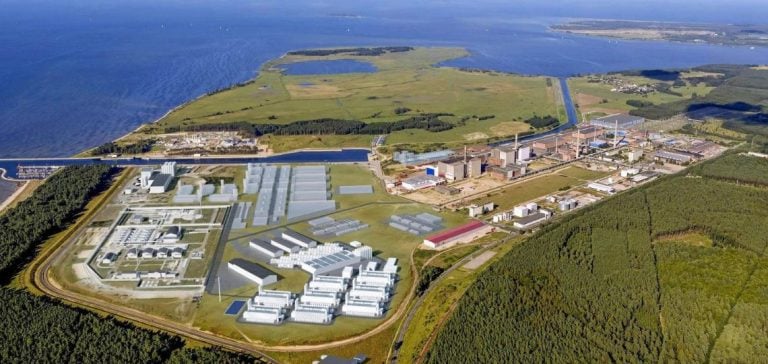The development of the Lubmin site in Germany is part of a drive to boost energy self-sufficiency using green hydrogen. The project, supported by the KGAL ESPF 6 fund, aims to create a hydrogen production hub with a capacity of 1,050 MW, making the site a key element in the country’s energy transition.
This is one of Germany’s strategic responses to reducing its dependence on imported fossil fuels. The project is being built on a site already equipped with infrastructure for connection to the high-voltage electricity grid, facilitating the integration of hydrogen into existing energy systems.
Initial production capacity is expected to reach 210 MW by 2028, followed by a gradual expansion to 1,050 MW in subsequent years.
This gradual ramp-up will enable hydrogen production to be adapted to the growing needs of the German and European markets.
Local resources for decentralized production
Lubmin benefits from several strategic advantages for hydrogen production.
The site has access to offshore wind power, which feeds the electrolysis process needed to produce green hydrogen.
What’s more, the industrial port of Lubmin will play a crucial role in importing and distributing this hydrogen throughout Europe.
This will reduce dependence on external energy sources while increasing local production capacity.
Germany’s hydrogen transport network, currently being expanded, will reinforce the distribution of hydrogen produced in Lubmin to industrial and chemical hubs, notably Frankfurt-Höchst and Stuttgart.
This project is part of a wider effort to create a European hydrogen market, with a clear ambition: to make hydrogen a viable alternative to fossil fuels in the industrial and chemical sectors.
Support from institutional investors
KGAL ESPF 6, as the main investor in this project, anticipates a significant return on investment.
The fund sees this project as an opportunity to diversify the German energy mix and create value for its investors.
However, KGAL ESPF 6’s financial contribution is only one part of the project.
Industrial players such as GP JOULE, involved in the development of renewable energy solutions for over a decade, are also mobilized to ensure the project’s success.
GP JOULE’s expertise in the hydrogen and renewable energy sector lends credibility to the project, although the company’s reputation is not being over-promoted.
The project is also supervised by PtX Development GmbH, another key player in the implementation of hydrogen production infrastructures.
Together, these entities ensure a controlled development aligned with Germany’s industrial decarbonization objectives.
A major industrial challenge for Europe
The Lubmin project is not simply an addition to Germany’s hydrogen production capacity; it is part of a broader strategy to integrate hydrogen on a European scale.
With a total production capacity of up to 4 GW, the Lubmin hub will become one of the largest hydrogen production and distribution centers on the continent.
This infrastructure will contribute not only to meeting Germany’s internal needs, but also to supplying other European countries with green energy.
The production of hydrogen at the Lubmin site is all the more strategic given its proximity to major industrial centers, which are major consumers of energy.
The distribution network currently under development will cover more than 9,700 kilometers, connecting Lubmin to vital industrial zones and boosting the energy competitiveness of European industries.
This project is just one of the many initiatives launched to structure the future European hydrogen market.
Diversifying the energy mix
The Lubmin site is set to play a central role in the diversification of Germany’s energy mix, with a direct impact on Europe’s energy security.
At the same time, the capacity to import hydrogen via the industrial port opens up the possibility of future collaboration with other markets, notably in Asia and North America.
The Lubmin hub could thus become a logistics hub for the import and export of hydrogen on a global scale.
The ambition is to make hydrogen a major component of the European energy mix by the end of the decade, supporting industrial transition while reducing greenhouse gas emissions.
In this way, green hydrogen becomes a pillar for meeting the decarbonization targets set by the European Union, while reinforcing the autonomy of member states in terms of energy supply.






















